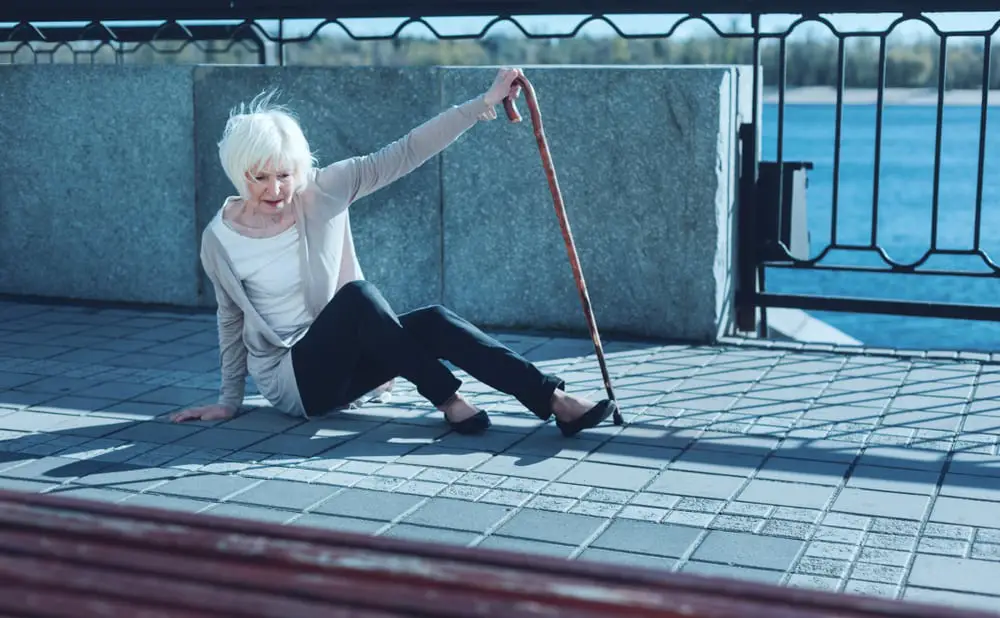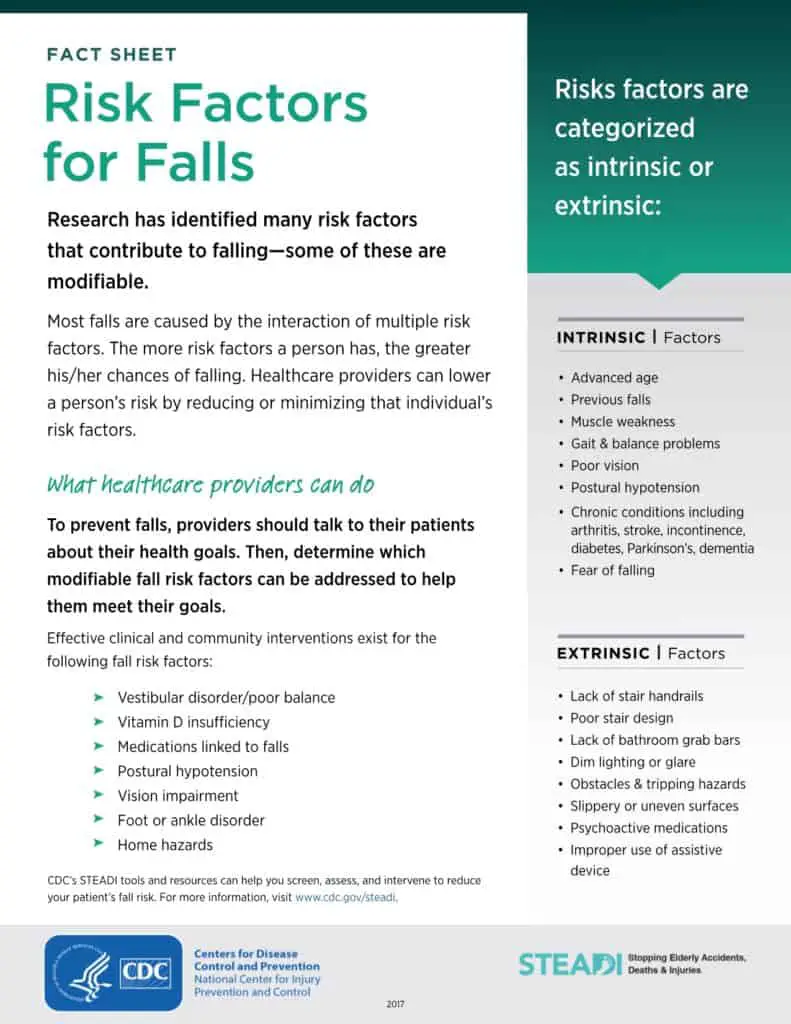
My 97-year-old maternal grandmother was chasing my younger brother around the top floor of our house one day. Suddenly, she slipped, fell, and broke her hip. Avoiding a fall is a balancing act.
Someone whose medical history might have filled a mere half-page was flown to a major hospital for hip repair. After surgery, a woman who had once been mentally clear at age 97 began to experience cognitive issues.
My grandmother’s fall was the result of her exuberance and sense of fun. Nevertheless, that fall and the resulting surgical intervention contributed to her deterioration and death one year later. One might say “But she was 98!” Yes, but you didn’t know my grandmother. But even my granny, with her fierce sense of independence, could not have anticipated or avoided that fall. Fall prevention is a balancing act that involves several factors.
Falls Are Significant Risk Factors for Seniors
Falls are the leading cause of accidental death in the US and the 7th leading cause of death in people aged 65 or older. The most common reasons seniors require nursing home care are fear of falling and actual falls. Any resulting fractures wound a person’s sense of independence and confidence, which in turn can usher in depression.
Osteoporosis results in many seniors having porous and fragile bones. Fractures and the complications of surgery due to sedation cause additional trauma to the body. 4.5% of elderly individuals die following a ground-level fall compared to only 1.5% of non-elderly patients. And women have an 18% risk of sustaining a hip fracture at some point in their lifetime.
Falls threaten our independence, which is a major consideration for why we should avoid them by taking sensible precautions wherever possible.
You Don’t Have to Fall Off a Ladder or Slip in the Bathtub To Be Hurt
Ground-level falls can be traumatic. I can attest to that. One day, while walking my dog on a trail peppered with sharp gravel, my canine took a dislike to an approaching dog. In her agitated state, she wrapped her leash around my legs before she lunged. I tripped, hitting the ground hard, my face planted firmly atop the sharp gravel. As I lay there staring at the sky, willing myself back onto my feet, my pooch made friends with her nemesis. When the other dog owner expressed alarm at the blood on my cheek and the giant goose egg forming there, I terminated the walk.
3 weeks later, I was still sporting a black eye, which took some time to disappear. I note that my cheekbone is still tender one year later. I didn’t seek medical attention, but what struck me was how quickly accidental falls can happen.
The CDC has published a Fact Sheet citing fall risk factors to be aware of:

How Can We Avoid A Fall?
As a senior, you should consider living in a one-story home or condo where there are no stairs. The CDC recommends installing grab bars where needed, assessing lighting, removing obstacles, and avoiding slippery surfaces indoors and out.
What is your best insurance to remain mobile and injury-free? If the foregoing has been addressed, exercise, foot care, proper footwear, and good nutrition are your best friends.
Exercise
Get active. Walking, cycling, and climbing stairs all strengthen muscles in your lower body. Stretch those muscles through yoga, which also strengthens muscles, enhancing your ability to balance.
Enter the issue of actual foot care. One study concluded that for people with foot pathologies, decreased foot function, and foot pain, falls can be imminent. This study cites foot deformities and peripheral neuropathy as being significant contributors to seniors falling.
The authors conclude: “this study presents compelling evidence of a relationship between foot problems and frailty that strengthens as the frailty level becomes more profound. In addition, we demonstrated several sensor-assessed gait decrements associated with foot problems. This information may prove useful for evaluating individuals who are at increased risk for falls and gait abnormalities due to specific foot problems. Assessment of frailty and gait characteristics could allow for earlier intervention to increase mobility and stability and to reduce the risk of falls, which may ultimately have an effect on improving not only mobility in those with foot problems but also quality of life for older adults.”
Bottom line: Improving your balance will significantly reduce the danger of falling. Exercise is the key. Ohio State University offers this excellent advice for fall avoidance.
Plus, YouTube provides numerous balance exercises on video, which can be done from home. Here is just one example:
What Are Some of the Risk Factors?
Risk factors for falling can be numerous, but a decline in physical fitness is a key hazard. Chronic disease can impair physical fitness. Surgical procedures and the attendant recovery time can pose problems. Environmental hazards can be anywhere and everywhere, like when I tripped over my dog on a simple walk.
Cognitive-behavioral issues should be taken into consideration.
People prescribed walkers need to use them regularly and as instructed. The fear of falling, impaired walking patterns, foot problems, reduced muscle strength, and poor reaction times all threaten our balance.
With proper exercise and the confidence that comes with it, some of these impediments can be overcome. If you require assistive devices to keep your balance, use them. Don’t let your pride render you the victim of a serious fall.
Avoiding falls is a balancing act, and that balancing act needs to be taken seriously. If we as individuals wish to retain our mobility and our independence for as long as possible, we have to do the work.
